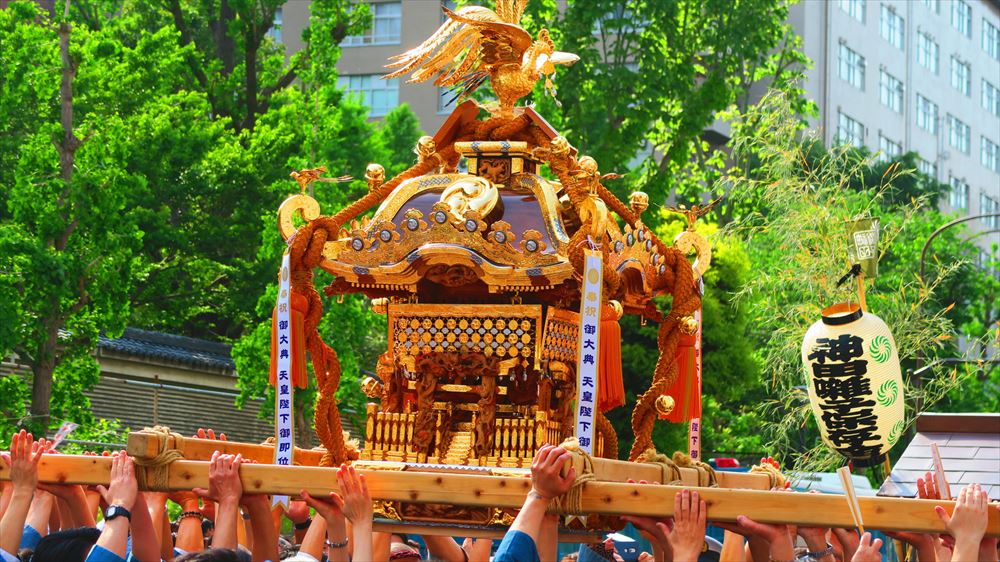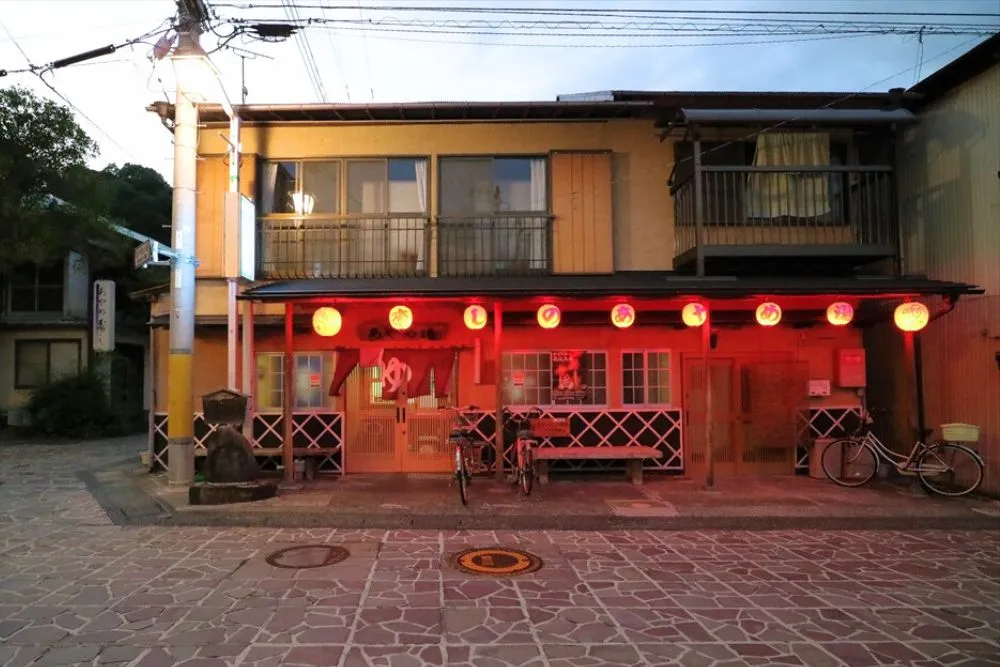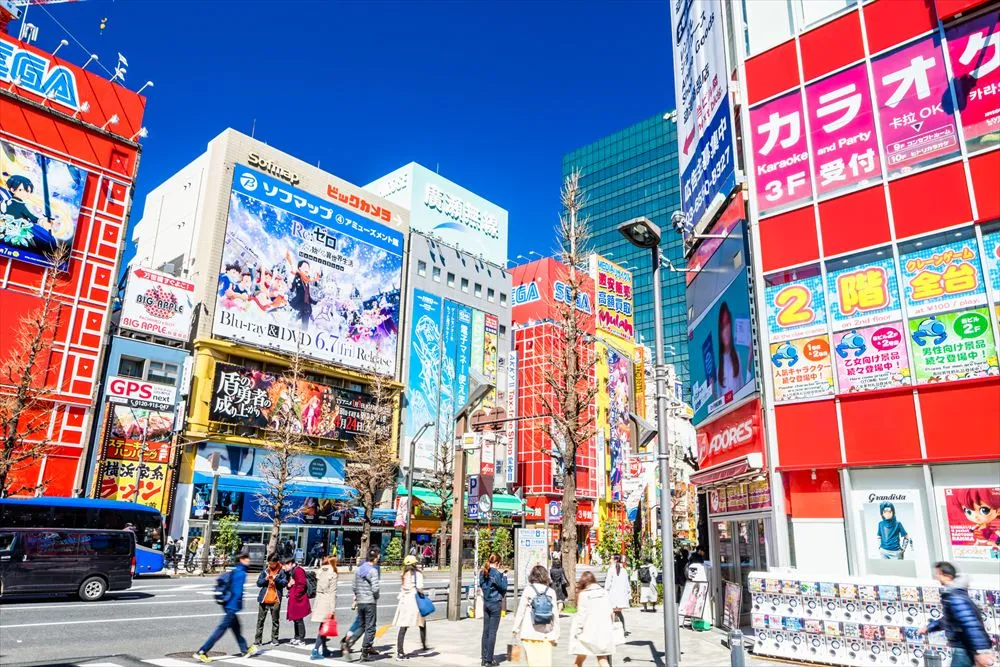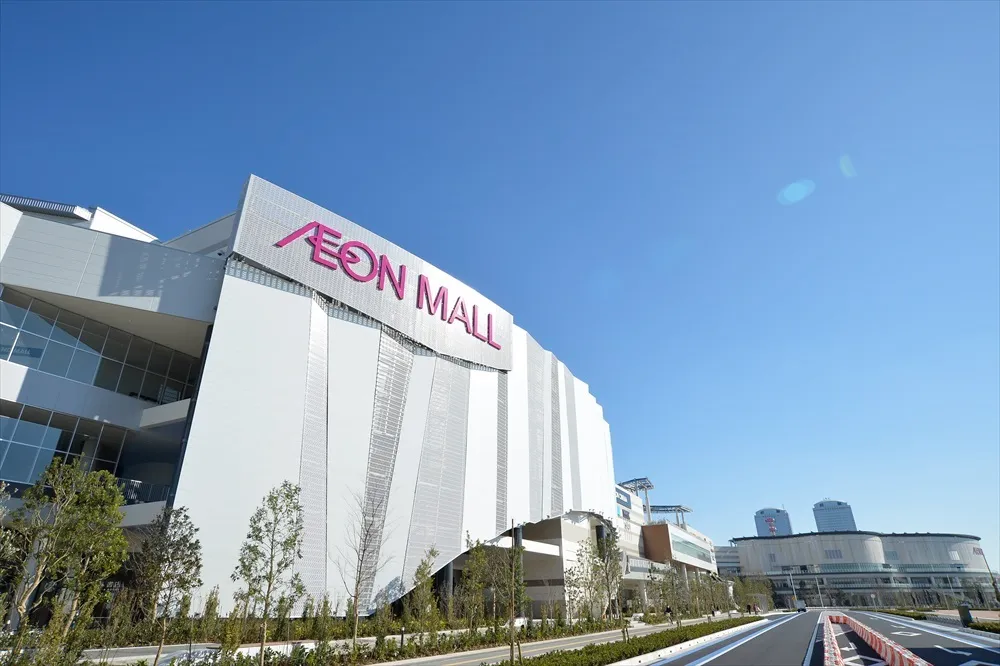 Shinjuku is known for having the highest daily average number of passengers at Shinjuku Station in Japan, making it one of the most visited areas by foreign tourists and a symbolic part of modern Tokyo. In this article, we will introduce the world-renowned bustling district around Shinjuku Station.”
Shinjuku is known for having the highest daily average number of passengers at Shinjuku Station in Japan, making it one of the most visited areas by foreign tourists and a symbolic part of modern Tokyo. In this article, we will introduce the world-renowned bustling district around Shinjuku Station.”
"What is around Shinjuku Station?"
Shinjuku Station South Exit / Southern Terrace

An overpass spanning numerous railways was constructed as a pedestrian deck at the South Exit of Shinjuku Station. The deck on the West side, ? referred to as the Southern Terrace ? is one of the best date spots in Shinjuku. In the summer you can feel a pleasant breeze blowing here, while in the winter you can enjoy viewing the beautiful illuminations at night. There are shops selling local specialties from Hiroshima and Miyazaki, enabling you to enjoy the local food of Hiroshima and Miyazaki even though you are in Tokyo.?
Crossing the overpass to the East, you will find the Takashimaya Times Square shopping complex. Tokyu Hands occupies the Southern part of levels 2 through 8 of Takashimaya, and is very popular as it carries a variety of items including bags, accessories and household goods. The store also sells traditional Japanese crafts, which make good souvenirs. Kinokuniya Bookstore, located in the annex of Takashimaya Times Square, carries a wide range of foreign books and books written about Japan in foreign languages.
Tokyo Metropolitan Government Building and High-Rises in Tokyo’s New Center

Tokyo Metropolitan Government Building and High-Rises in Tokyo’s New Center
Head west along Koshu Kaido Avenue (Route 20), which runs in front of the South Exit of Shinjuku Station, and you will see a skyscraper ? the Shinjuku Park Tower ? which has three triangular roofs.
On your right, you will see high-rise office buildings in the West (Nishi) Shinjuku area. Among them, the most impressive cathedral-esque twin tower is the Tokyo Metropolitan Government Building, which faces Shinjuku Central Park. This complex comprises three buildings: Main Building No. 1, No. 2 and Tokyo Metropolitan Assembly Hall. These buildings were completed in 1990 and were designed by a prominent architect, the late Kenzo Tange, as was the Shinjuku Park Tower mentioned above. They now function as the headquarters of the Tokyo Metropolitan Government, but they are also famous as tourist attractions. There are observation decks in both the North and South towers, on the 45th floor of the Main Building No. 1. The two top-floor panoramic observation decks are open to the public free of charge and can be visited from 9:30am till 11pm on weekdays, every day except for the year’s end and New Year holidays. If the weather is fine, you may be able to see Mt. Fuji from the observation deck. The night view is also fantastic. You may also find it worthwhile to visit the Tokyo Tourist Information Center, which is located on the first floor of the building.

More skyscrapers and hotels are located in West Shinjuku. Top-floor restaurants can be found in these buildings, so you may be able to enjoy a meal while viewing the city of Shinjuku.
Shinjuku Station West Exit - Electronics Megastores
With its bustling electronics megastores, the area around the Shinjuku Station West Exit is fast becoming the most famous electronics town after Akihabara. The dominant megastore in this area is Yodobashi Camera. Yodobashi Camera consists of several building dotted about, each specializing in particular products, and sells various goods including cameras, watches, games, computers, brand goods and even cosmetics. The “Watch Building” carries everything from reasonable 1,000-yen watches to antique watches, brand-name watches, and even electronic wave watches. The duty-free counter is on the first floor of the “Multi Media North Building.” In the basement of the “Game Building” you can find anime figures, models, and even model Japanese castles that could make good souvenirs. You should easily be able to find just what you’re looking for, as you can touch the actual cameras and audio players on display. Assistants who speak English, Chinese and Korean are always waiting, so foreign tourists can enjoy shopping there without hesitation. It can be fun to browse through the area where the Yodobashi shops are located the ? the so-called “Yodobashi Treasure Island.” If you are staying in Shinjuku it is possible to have your purchased items delivered to a designated hotel there. Please ask the staff for more details regarding this service.

The major distinctive building in this area is the Cocoon Tower, which was completed in October 2008. The building resembles a giant cocoon and appears in a very interesting manner from every direction and distance. This building was designed by Noritaka Tange, the son of Kenzo Tange (noted above).
An Information Center for Foreign Tourists can be found at Odakyu Railway Shinjuku Station. Assistants who speak English, Chinese and Korean provide tourist information for Hakone, Enoshima, Kamakura, Tanzawa, and Izu. The service also includes traffic information, package tours, and hotel reservations.
Discovering New Aspects of Attractive Shinjuku! Vol. 3
https://att-japan.net/en/186-2/
Kabuki-cho

Take the path under the railroad from the West Shinjuku area, and you will come to Kabuki-cho, one of the busiest bright-light towns in Japan. This “sleepless city” has all-night entertainment venues including restaurants, bars, arcades, theaters and other establishments, and it attracts all kinds of people ? from students to workers to tourists.
Visitors here will never be without dining options. There is a variety of choices to suit your budget and preferred style. There are restaurants serving pork cutlet “chazuke,” a unique recipe of cutlet (deep fried pork cutlet on rice with hot tea poured on it), and other establishments offering sukiyaki and shabu shabu at reasonable prices. Such venues are good for the refreshment of the inner person: in Kabuki-cho you can drink all night at fashionable bars, enjoy clubbing or karaoke, or even visit a “host club” where handsome men entertain female guests. You can also go to see a play or a musical, or watch movies at the theater. When you get tired, you may wish to satisfy your curiosity by staying at a capsule hotel ? it could be an unforgettable experience.
Neon signs illuminate Kabuki-cho even after midnight. Since the beginning of the decade, Tokyo municipal ordinance has been enacted to strengthen the safety of the town, and there are now frequent patrols in Tokyo. Today visitors can enjoy a safer and more comfortable city life in Kabuki-cho.
Discovering New Aspects of Attractive Shinjuku! Vol. 5 Shinjuku East Exit Area
https://att-japan.net/en/723-2/
Shinjuku Golden Street

Walking from Kabuki-cho to the east, you will find Shinjuku Golden Street ? a place where the atmosphere of the “good old days” is retained. Shinjuku Golden Street is located between Shinjuku Ward Office and Hanazono Shrine. There is veritable warren of shops in the old terraced houses built just after World War II. The street is also known as a place where writers and journalists used to hang out.
There are about 150 restaurants and bars along the street. Many of those establishments only have counters with capacity for about 10 persons. You will have to pay a “seat charge,” but the food and drinks are reasonably priced. The street has once again started to draw people’s attention, because some young proprietors in their 20s and 30s have recently started opening their own bars. Each bar has its own style. These days, bars can be based on such things as rock music, photographs, fighting sports, anime, and even Gundam. There are also some casual snack bars where you can just drop in and have a quick bite. There are so many houses here that deciding where to go may be a challenge in itself. We suggest that you first check the bars whose doors are open, and try visiting those that have a casual and friendly atmosphere. You might make some new friends, so by all means traverse the narrow alleys and find your own favorite bar. Enjoy the night in Shinjuku!







